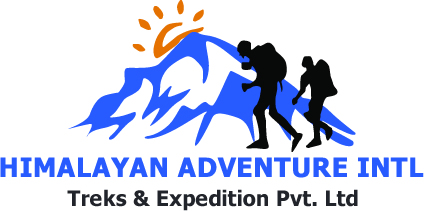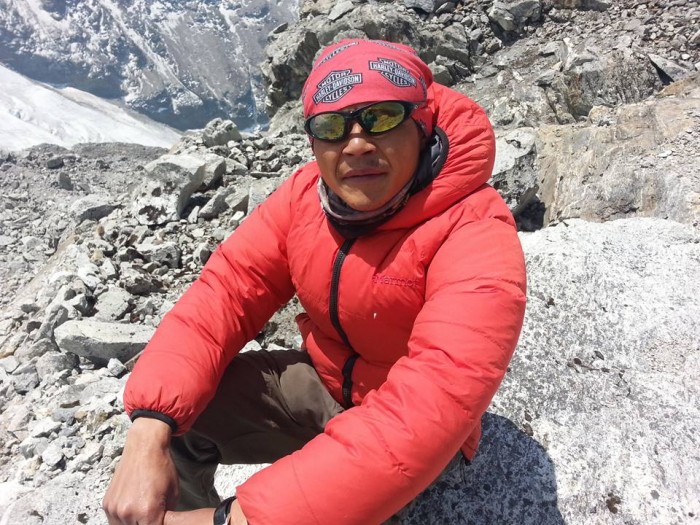Rising to 7,129 meters (23,389 ft), Baruntse Peak is one of the most spectacular yet underrated mountains in the Nepal Himalayas. Nestled between the iconic Everest and Makalu regions, Baruntse offers seasoned climbers a perfect combination of technical ascent, awe-inspiring vistas, and Himalayan solitude. The Baruntse Peak climb is gaining popularity among mountaineers seeking a rewarding alternative to more crowded peaks.
Organized professionally by Himalayan Adventure International Treks, the Baruntse expedition offers a full-service experience — from logistics and guides to safety and summit support. For many, this expedition is a stepping stone toward even more ambitious summits like Manaslu, Makalu, or Shishapangma.
Baruntse and Mera Climbing: A Dual Adventure
One of the most popular combinations for acclimatization and adventure is the Baruntse and Mera climbing expedition. Mera Peak, standing at 6,476 meters, is often used as a warm-up climb before Baruntse. This combination not only aids in gradual acclimatization but also offers the thrill of conquering two significant Himalayan peaks in one expedition.
The route typically begins with the Mera Peak expedition, allowing climbers to gain valuable high-altitude experience and confidence before tackling the more technical Baruntse climb. Himalayan Adventure International Treks offers a comprehensive Baruntse expedition itinerary including Mera Peak, ensuring climbers are well-prepared for the challenges ahead.
How Hard Is Climbing Baruntse?
A common question among climbers is: How hard is climbing Baruntse? The difficulty level of Baruntse is considered moderate to challenging. While not as technically demanding as Ama Dablam or Annapurna I, it requires solid alpine skills. Climbers will encounter steep ice and snow slopes (up to 50°), crevasse zones, and knife-edged ridges.
The key technical challenge is the ascent to the East Col and the summit ridge, which may require fixed rope climbing and the use of ascenders and jumar devices. Hence, Baruntse is best suited for climbers with prior high-altitude experience and good physical fitness. It’s often graded as Alpine PD+ to AD, answering the question: What is the grade of Baruntse?
Baruntse Expedition Itinerary Including Mera Peak
Here is a typical Baruntse expedition itinerary including Mera Peak with Himalayan Adventure International Treks:
Day 01: Arrival in Kathmandu (1,400m)
Airport pickup, welcome dinner, and expedition briefing.
Day 02-03: Preparation and sightseeing in Kathmandu
Final gear checks, permit processing, and cultural sightseeing.
Day 04: Fly to Lukla and trek to Chutanga (3,050m)
Day 05: Trek to Thuli Kharka via Zatrwa La (4,200m)
Day 06-08: Trek to Khare (5,045m) via Kothe
Scenic walk through Hinku Valley.
Day 09: Acclimatization day at Khare
Day 10-11: Mera Peak High Camp and Summit (6,476m)
Pre-climb training and summit push.
Day 12-14: Trek to Baruntse Base Camp (5,300m) via Seto Pokhari
Day 15-25: Baruntse Summit Climb (7,129m)
Rotations to Camp I (6,000m) and Camp II (6,400m), followed by summit push.
Day 26-28: Trek back to Lukla via Amphu Lapcha Pass (5,845m)
Adventurous descent with rope-assisted crossing.
Day 29: Fly back to Kathmandu
Day 30: Rest day and celebration dinner
Day 31: Final departure
This itinerary ensures progressive acclimatization and gives climbers ample time for summit attempts, weather contingencies, and rest days.
Baruntse Expedition Cost
The Baruntse Expedition Cost depends on group size, support levels, and whether you include Mera Peak in the package. On average, a full-service expedition ranges from USD 8,500 to USD 11,000 per person with Himalayan Adventure International Treks. This includes:
-
Climbing permits (Baruntse + Mera Peak)
-
Domestic flights (Kathmandu–Lukla–Kathmandu)
-
All meals and accommodations during the trek
-
Base camp setup, tents, kitchen staff
-
Professional climbing guides and porters
-
Group climbing equipment and fixed ropes
-
Insurance for Nepali staff
-
Government taxes
Additional costs may include personal gear, travel insurance, tips, and emergency evacuation (if needed).
Mera Peak Expedition Cost
When booked separately, the Mera Peak expedition cost ranges from USD 2,200 to USD 2,800, depending on services included. However, combining it with Baruntse as a warm-up climb can reduce costs and increase efficiency.
Adventure Peaks Baruntse: Why Choose Himalayan Adventure International Treks?
Many climbers consider foreign-based companies like Adventure Peaks Baruntse, but Himalayan Adventure International Treks offers comparable (or better) service with added local expertise. Our advantages include:
-
Veteran Sherpa climbing guides with summit records
-
Locally sourced logistics and supplies
-
Competitive pricing
-
Deep cultural understanding
-
Custom itineraries and small-group focus
Comparing Other Expeditions
If you're planning future climbs, it's worth comparing Baruntse with other popular Himalayan expeditions offered by Himalayan Adventure International Treks.
Ama Dablam Expedition 2025/26
-
Altitude: 6,812m
-
Difficulty: Highly technical
-
Duration: ~28 days
-
Ama Dablam expedition cost: USD 6,500–USD 8,000
A prestigious peak for climbers with advanced rock and ice skills.
Manaslu Expedition 2025/26
-
Altitude: 8,163m (8th highest peak)
-
Duration: ~35 days
-
Manaslu expedition cost: USD 12,500–USD 14,000
Considered one of the safer 8000ers with relatively fewer technical demands.
Lobuche Expedition
-
Altitude: 6,119m
-
Ideal as an introductory peak
-
Duration: ~18 days
-
Cost: USD 2,200–USD 2,800
Himlung Himal Expedition
-
Altitude: 7,126m
-
Off-the-beaten-track peak near the Tibetan border
-
Duration: ~30 days
-
Cost: USD 7,000–USD 9,000
Annapurna I Expedition
-
Altitude: 8,091m
-
Among the most dangerous peaks (high fatality rate)
-
Cost: USD 18,000–USD 22,000
Requires elite climbing proficiency.
Makalu Expedition Cost
-
Altitude: 8,485m
-
Highly technical and demanding
-
Makalu expedition cost: USD 16,000–USD 20,000
Shishapangma Expedition
-
Altitude: 8,027m
-
Located in Tibet; currently subject to Chinese permit restrictions
-
How much does the Shishapangma expedition cost? Approximately USD 15,000–USD 18,000
Each of these climbs offers a unique set of challenges and rewards. Baruntse stands out as a “bridge” between high-altitude trekking peaks like Mera and technical 8000ers such as Manaslu or Makalu.
Best Season for Baruntse Climb
The ideal times to attempt the Baruntse climb are:
These seasons offer the most stable weather, moderate temperatures, and better summit success rates. Spring offers more snow and glacier coverage, while autumn offers clearer skies.
Fitness and Training for Baruntse Expedition
Climbers should undertake at least 6–8 months of physical preparation, focusing on:
-
Cardiovascular endurance (running, hiking)
-
Strength training (core, legs, back)
-
Altitude conditioning (hypoxic training if possible)
-
Basic mountaineering skills (ropework, crampon use, self-arrest)
Previous experience on peaks above 6,000 meters is highly recommended.
Is Baruntse Right for You?
If you’re looking for an unforgettable Himalayan adventure that challenges your limits without overwhelming technical difficulty, the Baruntse Peak climb is a perfect choice. It offers a diverse landscape, less crowded routes, and a chance to summit a majestic 7,000+ meter peak with professional support from Himalayan Adventure International Treks.
Whether you’re stepping up from Mera or Lobuche, or preparing for giants like Manaslu and Makalu, Baruntse bridges the gap with both thrill and grace.
Contact Himalayan Adventure International Treks today to join our next Baruntse Expedition 2025/26 and experience the grandeur of the Himalayas with unmatched service and safety.

 Plan Your Trip Now
Plan Your Trip Now 


